Failure on Defence Strategic Review will be catastrophic for our security, self-image and world standing

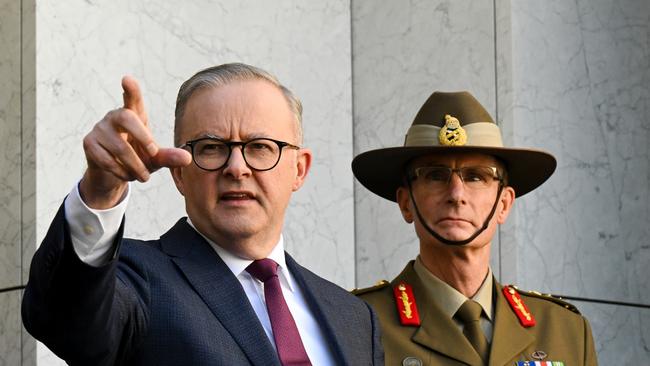
Something will have to give to allow Australia to bring new purpose, direction and an enhanced military capability as envisaged by the Defence Strategic Review. The review has done a lot in a short time but in defence it is implementation that matters. The flaw in the government’s response is the gulf between the strategic reimagination on display and the financial neutrality for the next four years.
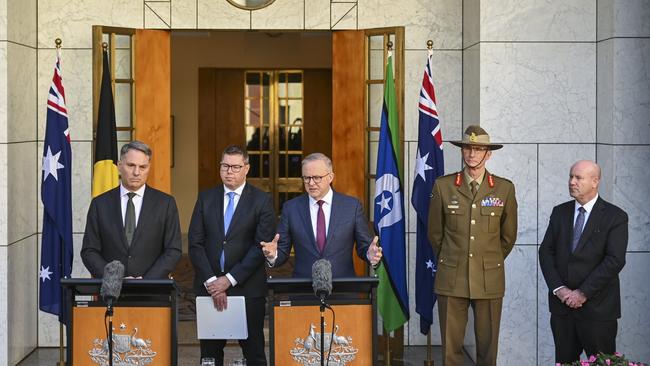
Australia will be tested by this review. Can we realise its ambition or will we succumb, unable to sufficiently mobilise, cut through the defence bureaucracy or win the support of the public to significantly lift defence spending? Failure to deliver will be catastrophic for our security, self-image and standing in the world.
Implementation of the DSR will demand national sacrifice, an elevation of a whole-of-government defence policy and far-reaching change in spending priorities. None will be easy. Much will defy Labor’s cultural instincts. This leads to the pivotal question: are Anthony Albanese and Richard Marles warriors with the conviction to reposition Australia to respond to the challenge from China and threats to the regional order?
Anybody who doubts the task should absorb the review’s findings.
It concludes our “Defence of Australia” doctrine of 50 years is “no longer fit for purpose”. Defence must become more of a “whole-of-government and whole-of-nation” story. The potential for major power conflict now exists. China’s military modernisation is “the largest and most ambitious of any country” since World War II and China is engaged in strategic competition in our “near neighbourhood”.
The situation is urgent and “business as usual” won’t work. The strategic risks demand a new approach to “force posture, force structure, capability development and acquisition”.
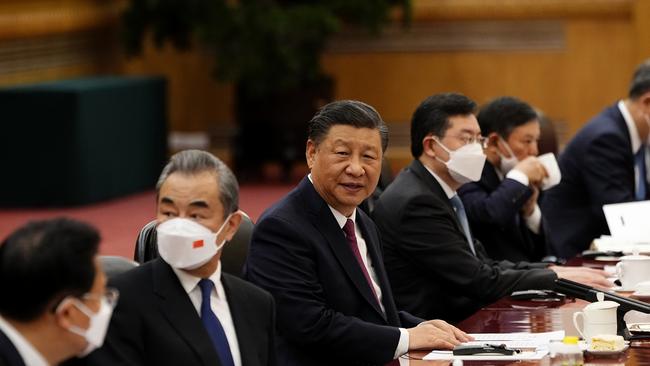
To dramatise its point the DSR says “our view is that this is not ‘just another Defence review’ ”– its intent is to reshape the capability of Defence for coming decades. It warns that “for the first time in 80 years we must go back to fundamentals” because Australia can rely no longer on geography and warning time.
Invasion is not the real issue. That possibility is remote. Military threat or coercion of Australia does not require invasion. This is apparent from China’s tactics against Australia in recent years. The pivotal change in Australia’s outlook is that our senior partner, the US, is no longer the “unipolar leader of the Indo-Pacific” with US-China rivalry now “the defining feature of our region”.

The review makes clear the challenge is strategic, technological and economic. It must be seen against the re-occurring failure of this country over 20 years to engage in productivity-enhancing reform, run an effective energy policy, deliver efficiency and equity to the tax system, and enhance government service delivery. Any assumption the defence restructuring will be free from the issues that have plagued national reform projects for so long is heroic.
One asset is broad bipartisanship for the direction. That’s critical. It was the Morrison government that declared warning time was a lost cause, sought a national response to China’s coercion and laid the foundations for AUKUS. The fundamental issue is obvious: Labor’s political will. This review requires Labor, elected on an agenda of domestic compassion, to divert large-scale funds to the restructuring of defence. It requires Labor, now working to stabilise China relations, to pursue a whole-of-government policy for years to check Beijing’s ambitions. It means an even closer partnership with the US with the review highlighting this reality and dismissing public analysis to the contrary.
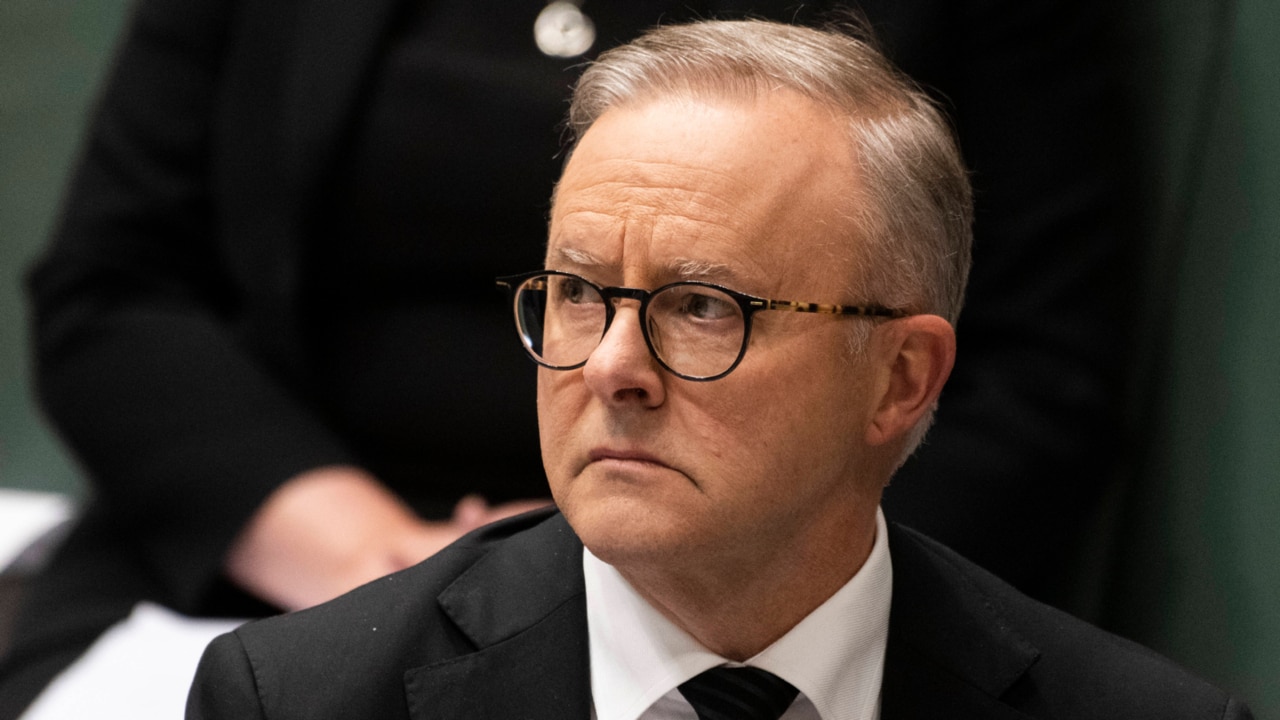
The message: we are becoming more intimate with America, not more distant.
Defence Minister Marles is the moving force in this transforming policy. Marles was in regular dialogue with the review’s authors, former Defence Force chief Angus Houston and former defence minister Stephen Smith. Marles is a conviction politician on this agenda and has the chance to become Labor’s most important Defence Minister since Kim Beazley.
But this basket of ideas won’t necessarily be welcomed by the Labor rank and file and it will opposed by much of the progressive movement. Will senior ministers hang tough when it comes to trade-offs at the cabinet table? Put crudely, will alarm about China drive support for more resources into defence against domestic political imperatives?
The principle of the new defence doctrine is projecting power. As Marles said: “The defence of Australia doesn’t really mean much unless we have the collective security of the region in which we live.” That means working with regional allies and the US in finding a new balance of power against China.
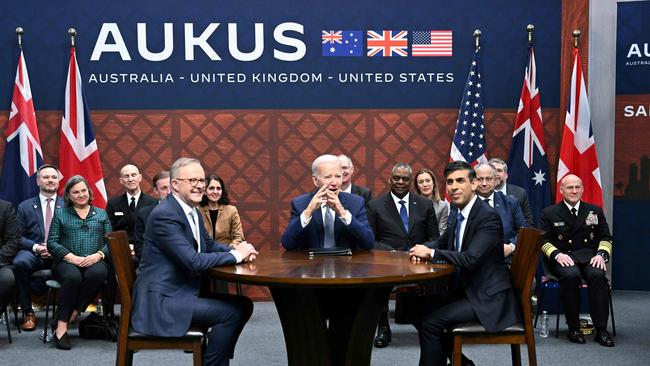
The classified version of this report presumably deals with how Australia should respond to China’s efforts to intimidate and coerce Australia.
The review and its embrace by Labor is a threshold moment. The projection of power and deterrence of an adversary at distance constitute a new state of mind guiding decision-making. They are seen in the nuclear-powered submarine fleet, prioritising a missile capability from multiple platforms, developing a stronger defence industry to guarantee supply, reshaping the army with a force projection focus, strengthening our defence presence in northern Australia, and rebuilding numbers and skills in the Australian Defence Force.
There are three major problems. The first is the deferral of decisions on the navy’s surface fleet pending another six-month review, the presumed aim being to move towards having a larger number of smaller vessels.
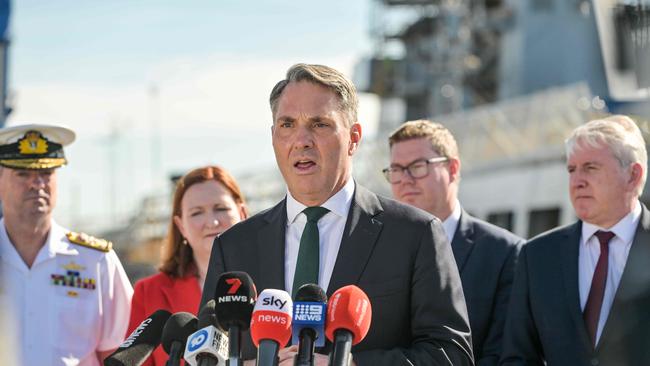
The second problem is the capacity of the Defence system to change its ways and deliver a greater capability much faster. That demands a rare degree of institutional reform.
The third major problem is the funding. The review repeatedly invokes urgency and an end to business as usual. Well, there’s no sense of urgency in the funding – and it is the funding that decides whether this blueprint is realised or falls over.
There has been a re-prioritising of funding but no extra funding across four years. The full costs are yet to be known. With defence spending at about 2 per cent of gross domestic product, Marles said: “Defence spending will need to grow. It is absolutely our expectation that defence spending over the medium term, over the decade, will grow above the existing trajectory of growth that we inherited from the former government.” “Our expectation” – that’s hardly reassuring.

Defence spending will need to lift to 2.5 per cent of GDP and probably hit 3 per cent to secure this agenda. But Labor seems terrified by the financial priorities. Does Labor possess the political confidence to back the ambition of the review with the funds to realise its scope? Our friends and rivals will be watching.
The DSR is pitching high. It says the new defence strategy “will be the most substantial and ambitious approach to Defence recommended to any Australian government” since World War II. Its vision of radical change and restructuring the defence force is a step in the right direction. Labor has defined the test for itself. Is it up to the job?


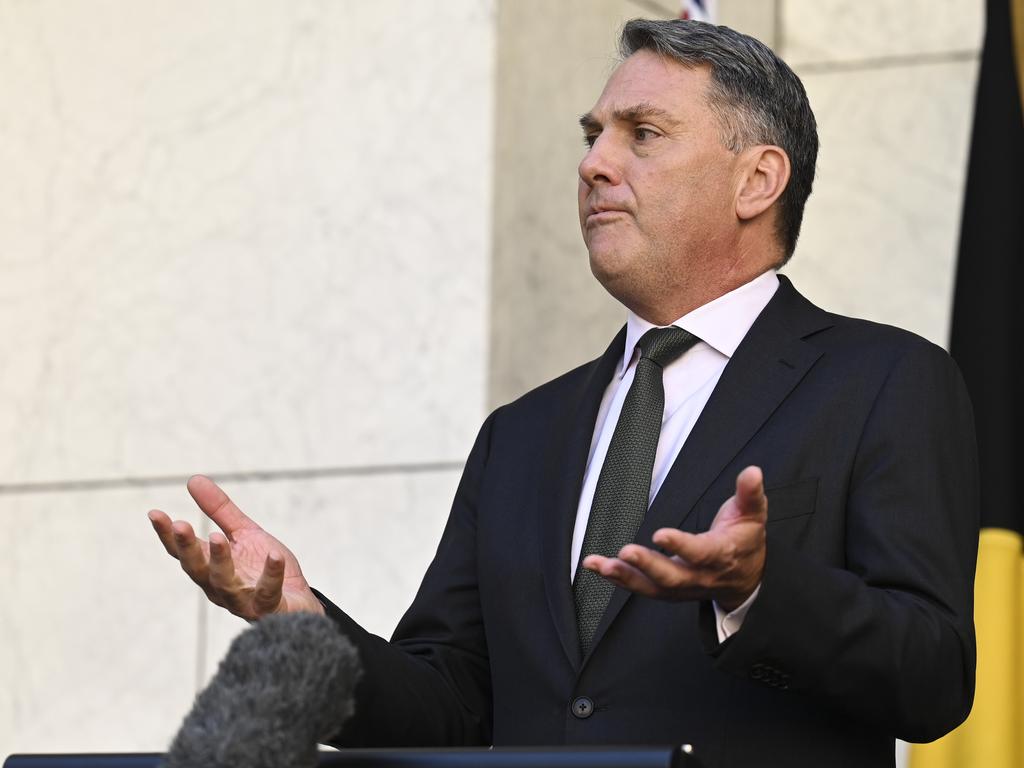




The Albanese government comes loaded with epic plans, soaring rhetoric and a remaking of defence force doctrine – but such ambition raises the stakes for Australia and for Labor because these plans cannot be realised in the politics-as-usual model of our national life.